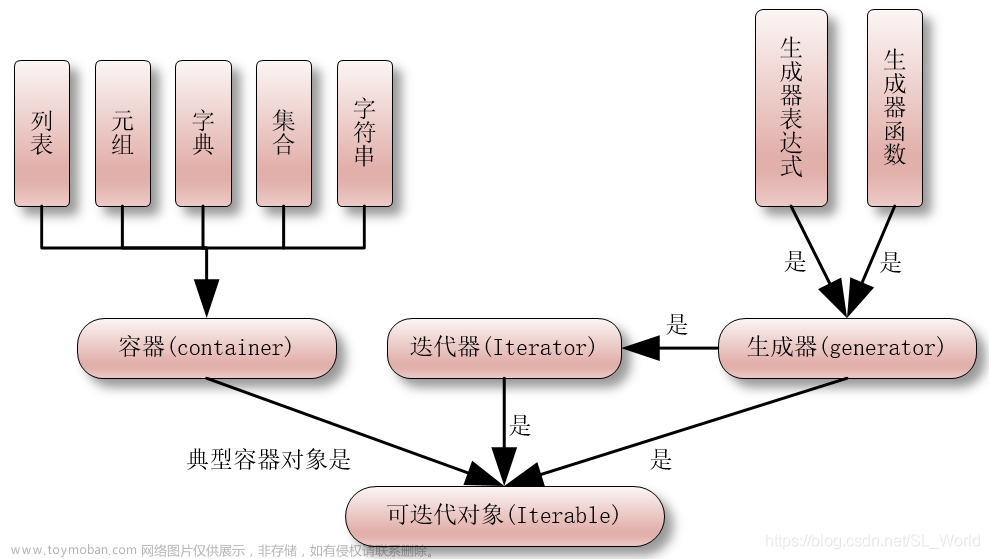目录
前言
定义
类装饰器
基本用法
操作方式
操作类的原型
类继承操作
方法装饰器
属性装饰器
存取器装饰器
参数装饰器
基本用法
参数过滤器
元数据函数实现
参数过滤
效果实践
装饰器优先级
相同装饰器
不同装饰器
装饰器工厂
hooks与class兼容
结语
相关文章
前言
本文收录于TypeScript知识总结系列文章,欢迎指正!
程序遵循开放封闭原则,即在设计和编写软件时应该尽量避免对原有代码进行修改,而是通过添加新的代码来扩展软件的功能。
在日常开发中不知你有没有遇到以下情况,我们封装了一个Request模块,现在需要对请求进行拦截,访问请求参数,此时我们可以通过装饰器针对请求函数或者请求类进行访问,获取参数并解析
定义
在TS中,装饰器是一种特殊类型的声明。可以附加到类、方法、属性或参数上用于修改类的行为或属性。
在面向对象编程中,有时需要对类的行为和功能做出修改,直接修改类的内部可能会使成本升高,或出现其他问题;此时可以使用装饰器来修改类,在保证类内部结构与功能不变的前提下对数据或行为进行迭代
TS中装饰器可以分为类装饰器、方法装饰器、属性装饰器和参数装饰器。
tips:使用装饰器前需要在tsconfig中开启experimentalDecorators属性
类装饰器
类装饰器是应用于类的构造函数的函数,它可以用来修改类的行为。类装饰器可以有一个参数,即类的构造函数,通过这个参数我们可以对类的行为进行修改。
基本用法
类装饰器的语法是在一个普通的函数名前面加上@符号,后面紧跟着要装饰的类的声明,如:
const nameDecorator = (constructor: typeof Animal) => {
console.log(constructor.prototype.name)// undefined
}
@nameDecorator
class Animal {
name: string = "阿黄"
constructor() {
console.log(this.name);// 阿黄
}
}
new Animal()
在上述代码中,我使用decorator获取Animal类的name属性,发现获取的是未定义,而在构造函数中却可以获取,原因是类的装饰器是在类定义时对类进行操作的,而属性及函数的初始化是当类实例化时进行的,所以获取不到name的值
操作方式
通过类装饰器操作类的方式有两种:操作类的原型和类的继承
操作类的原型
ES6之前的类是通过构造函数实现的,其原型prototype属性是存在的,所以我们在对类进行操作时可以使用修改原型的方式
type IAnimal = {
name?: string
getName?: () => string
}
const nameDecorator = (constructor: Function) => {
const _this = constructor.prototype // 模拟类内部环境
_this.name = "阿黄"
_this.getName = () => {
return _this.name
}
}
@nameDecorator
class Animal implements IAnimal { }
const animal: IAnimal = new Animal()
console.log(animal.getName()) // 阿黄
上面代码实现了对类中name属性初始化以及实现了类的getName方法,在ES5中如何实现类的重写?看看下面代码对装饰器的修改:
const nameDecorator = (constructor: IAnimalProto) => {
const _this = constructor.prototype // 模拟类内部环境
_this.name = "阿黄"
return class extends constructor {
getName = () => {
return "名字:" + _this.name
}
}
}tips:如果通过这种方式无法修改类的属性或方法,可以把tsconfig中target属性调整为ES5,兼容低版本浏览器,此时类是通过构造函数实现的
类继承操作
ES6中的类语法糖中没有prototype属性,所以我们可以使用继承的方式实现上面的代码,并使用重写的方式修改类中的同名函数
type IAnimal = {
name?: string
getName?: () => string
}
type IAnimalProto = {
new(): Animal
} & IAnimal
const nameDecorator = (constructor: IAnimalProto) => {
return class extends constructor {
constructor(public name = "阿黄") {
super()
}
getName() {// 重写类中的函数
return "姓名:" + this.name
}
}
}
@nameDecorator
class Animal implements IAnimal {
name?: string;
getName() {
return this.name
}
}
const animal: IAnimal = new Animal()
console.log(animal.getName()) // 姓名:阿黄方法装饰器
方法装饰器是应用于类方法的函数,它可以用来修改方法的行为。方法装饰器可以接收三个参数,分别是目标类的原型对象(若装饰的是静态方法,则指的是类本身)、方法名称和方法描述符。
需要注意的是构造函数不是类的方法,所以方法装饰器不能直接用于装饰构造函数
tips:在类中使用方法装饰器需要避免箭头函数的出现,因为箭头函数的this指向它定义的环境,而不是实例对象,这导致了它无法获取到类的属性和方法
下面是一个案例
const nameDecorator = (target: Animal, key: string, descriptor: PropertyDescriptor): PropertyDescriptor => {
console.log(target); // { setName: [Function (anonymous)] }
console.log(key); // setName
console.log(descriptor);
// {
// value: [Function (anonymous)],
// writable: true,
// enumerable: true,
// configurable: true
// }
return descriptor
}
class Animal {
name: string
@nameDecorator
setName(name: string) {
this.name = name
}
}
const animal = new Animal()
animal.setName("阿黄")
console.log(animal.name); // 阿黄
其中target表示当前函数所在的类,key一般指函数名,descriptor指当前函数对象的描述符
基于上面的代码我们可以重写一下类中的setName函数:
const nameDecorator = (target: Animal, _: string, descriptor: PropertyDescriptor): PropertyDescriptor => {
descriptor.value = (name: string) => {
target.name = "名字:" + name
}
return descriptor
}属性装饰器
属性装饰器应用于类属性的函数,它可以用来修改属性的行为或拦截属性的定义和描述符的访问,但是不能修改属性值。属性装饰器可以接收两个参数,分别是目标类的原型对象(若装饰的是静态属性,则指的是类本身)和属性名称。
与方法装饰器不同属性装饰器不会返回descriptor这个参数,也就是无法获取到属性的描述
const nameDecorator = (target: Animal, key: string) => {
target[key] = '阿黄'
}
class Animal {
@nameDecorator
name: string
setName(name: string) {
this.name = name
}
}
const animal = new Animal()
console.log(animal.name);// 阿黄
animal.setName("小黑")
console.log(animal.name);// 小黑tips:为什么无法使用属性装饰器给属性定义初始值? 此时可以检查一下你的tsconfig.json里面的配置target是不是设置成ES2021以后(如:ESNext,ES2022,ES2023等),在ES2022前在TS中声明了属性成员会在JS编译成第一张图,ES2022及以后显示的是第二张图


解决方法:参考这个

我们可以将属性声明修改为环境声明(declare,在后续文章会说到),或者使用旧版本的target配置
class Animal {
@nameDecorator
declare name: string
setName(name: string) {
this.name = name
}
}存取器装饰器
存取器装饰器是一种特殊类型的装饰器,它可以被用来装饰类中的存取器属性。它的使用方式与方法装饰器相同。但是与方法装饰器不同的是存取器descriptor参数中没有value值,但是我们可以通过修改descriptor来重写getter和setter方法
const nameDecorator = (_: any, __: string, descriptor: PropertyDescriptor) => {
const __getter = descriptor.get;
descriptor.get = function () {// 必须使用function,使用箭头函数获取不到this
const value = __getter?.call(this);// 运行get获取存取器属性
return "名字:" + value;
};
}
class Animal {
constructor(private _name: string) { }
@nameDecorator
get name() {
return this._name
}
}
const animal = new Animal("阿黄")
console.log(animal.name);参数装饰器
参数装饰器是应用于类构造函数或方法参数的函数,它可以用来获取参数位置。参数装饰器可以接收三个参数,分别是目标类的原型对象(若装饰的是静态方法,则指的是类本身)、方法名称和参数索引(第几个参数,从0开始)。
基本用法
参数装饰器是一个函数,它可以被应用到类的构造函数、方法的参数上,它无法应用在访问器(getter 和 setter)的参数。
const nameDecorator = (target: any, key: string, parameterIndex: number) => {
const name = target.name ?? target.constructor.name
console.log(`${name}中的${key ?? '构造函数'}第${parameterIndex}个参数`);
}
class Animal {
constructor(public _name: string) { }
setName(@nameDecorator name: string) {
this._name = name
}
}
new Animal("阿黄")参数装饰器虽然无法直接获取或者修改参数,但是可以将参数的位置标识出来,与元数据(reflect-metadata库),以及方法装饰器配合达到过滤参数的目的
参数过滤器
下面我们借助一个简单的反射元数据操作实现一个参数过滤器
元数据函数实现
type IKey = string | symbol | number
const getReflect = () => Reflect ?? Object
const __Reflect = getReflect()
const defineMeta = (target: any, key: IKey, metadataKey: IKey, descriptor: PropertyDescriptor): void => {
__Reflect.defineProperty(target[key], metadataKey, descriptor)
}
const getMeta = (target: any, key: IKey, metadataKey: IKey,): PropertyDescriptor => {
return __Reflect.getOwnPropertyDescriptor(target[key], metadataKey)
}参数过滤
下面我们实现一个参数过滤,如果name等于阿黄,则中断函数执行并跳出
// 存储参数的索引
const saveMeta2Arr = (target: any, key: string, parameterIndex: number, keyWord: string) => {
const paramsList = getMeta(target, key, keyWord)?.value ?? []
paramsList.push(parameterIndex)
defineMeta(target, key, keyWord, { value: paramsList })
return paramsList
}
// 参数装饰器
const paramsDecorator = (target: any, key: string, parameterIndex: number) => {
const paramsList: string[] = saveMeta2Arr(target, key, parameterIndex, 'list:params')// 参数列表
defineMeta(target, key, 'filter:params', {
value: (...args) => {
if (!!!args.length) return void 0 // 没传参数默认跳过参数校验
return paramsList.filter(it => args[it] === "阿黄").length > 0// 我的校验规则是参数等于阿黄就跳出函数,这个可以自行修改
}
})
}
// 函数装饰器
const methodDecorator = (target: Animal, key: string, descriptor: PropertyDescriptor) => {
const fn = getMeta(target, key, 'filter:params').value // 获取参数装饰器的回调函数
const method = descriptor.value
descriptor.value = function (...args) {
if (fn(...args)) return console.error("跳出了函数");// 过滤操作
method.apply(this, args)
}
}
class Animal {
constructor(public name?: string) { }
@methodDecorator
setInfo(@paramsDecorator name?: string) {
console.log("执行了函数");
this.name = name
}
}
效果实践
实现完成我们实例化一下类试试,可以看到,此时由于我们传入的参数是阿黄,所以setName函数未执行
const animal = new Animal()
animal.setInfo("阿黄")
console.log(animal.name);
// 跳出了函数
// undefined下面我们修改一下,传入一个参数:小黑
const animal = new Animal()
animal.setInfo("小黑")
console.log(animal.name);
// 执行了函数
// 小黑上述代码执行了setName并且将name赋值了小黑
装饰器优先级
下面说说当多个装饰器作用于同一个目标时,它们执行的顺序和影响的优先级是怎样的
相同装饰器
同一种装饰器的执行顺序是从下往上,理解为就近原则,近的先执行
const decorator1 = (...args: any[]) => {
console.log(1)
}
const decorator2 = (...args: any[]) => {
console.log(2)
}
const decorator3 = (...args: any[]) => {
console.log(3)
}
@decorator1
@decorator2
@decorator3
class Animal { }
new Animal()
// 输出3 2 1不同装饰器
不同装饰器遵循:参数>函数=属性=存取器>类,参数优先级最高,类最后执行。何以见得?
const decorator1 = (...args: any[]) => {
console.log(1)
}
const decorator2 = (...args: any[]) => {
console.log(2)
}
const decorator3 = (...args: any[]) => {
console.log(3)
}
const decorator4 = (...args: any[]) => {
console.log(4)
}
const decorator5 = (...args: any[]) => {
console.log(5)
}
@decorator1
class Animal {
@decorator2
_name: string
@decorator3
get name() {
return this._name
}
@decorator4
setName(@decorator5 name: string) {
this._name = name
}
}
new Animal()上面的代码输出2 3 5 4 1;我们换个顺序,把属性,函数,存取器调换位置再试试
@decorator1
class Animal {
@decorator4
setName(@decorator5 name: string) {
this._name = name
}
@decorator3
get name() {
return this._name
}
@decorator2
_name: string
}输出5 4 3 2 1。可见属性,函数,存取器优先级在同级,参数更高,类更低
装饰器工厂
使用类装饰器和方法装饰器时,我们难免会遇到参数传递的问题,每个装饰器都有可以复用的可能,为了使代码高可用,我们可以尝试使用高阶函数实现一个工厂,外部函数接收参数,函数返回装饰器
type IAnimal = {
name?: string
}
type IAnimalProto = {
new(name: string): Animal
} & IAnimal
const nameDecorator = (name: string) => (constructor: IAnimalProto) => {
return class extends constructor {
constructor() {
super(name)
}
}
}
@nameDecorator("阿黄")
class Animal implements IAnimal {
constructor(public name?: string) { }
}
const animal: IAnimal = new Animal()
console.log(animal.name);
上述代码中我们实现了使用装饰器工厂给Animal类的属性name赋予默认值的功能
hooks与class兼容
在实际开发中,如果是使用react开发应该会遇到这样的问题,使用类开发的组件装饰器写法是这样
@EnhanceConnect((state: any) => ({
global: state['@global'].data
}))
export class MyComponent {
constructor(props: IProps) {
// ...
}
}如何转换成hooks写法?
export const MyComponent = EnhanceConnect((state: any) => ({
global: state['@global'].data
}))((props: IProps) => {
useEffect(() => {
// ...
})
})结语
本文详细讲述了类装饰器,方法装饰器,属性装饰器,存取器装饰器,参数装饰器这五种装饰器的基本用法及注意事项;此外还针对装饰器优先级进行了排序及证明;最后介绍了装饰器工厂即装饰器的实际应用场景兼容方法。
感谢你的阅读,希望文章能对你有帮助,有任何问题欢迎留言私信,请别忘了给作者点个赞哦,感谢~
相关文章
Decorators - TypeScript 中文手册文章来源:https://www.toymoban.com/news/detail-412601.html
装饰器与混合对象 - TypeScript 精通指南文章来源地址https://www.toymoban.com/news/detail-412601.html
到了这里,关于TypeScript(八)装饰器的文章就介绍完了。如果您还想了解更多内容,请在右上角搜索TOY模板网以前的文章或继续浏览下面的相关文章,希望大家以后多多支持TOY模板网!








